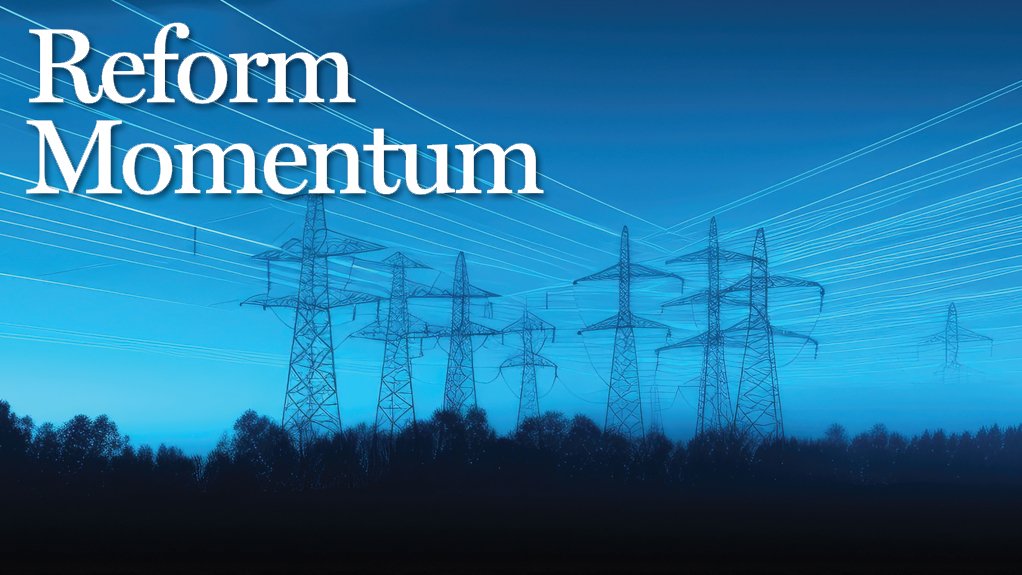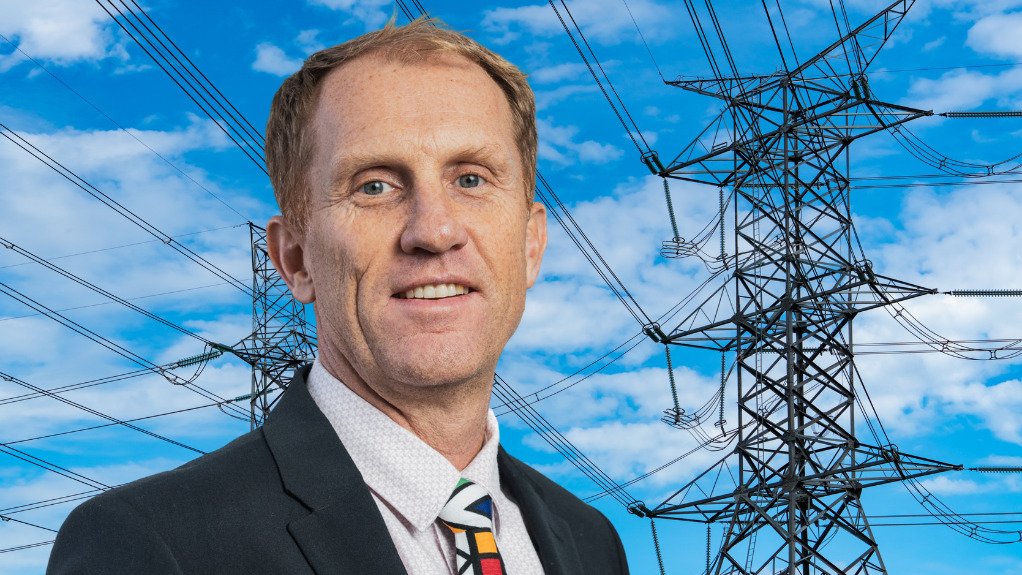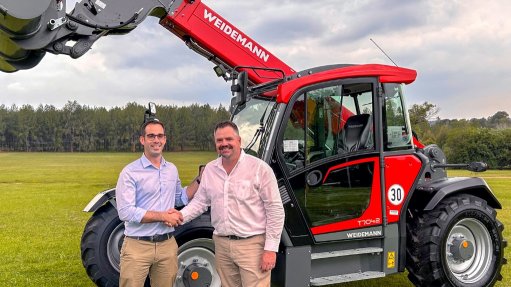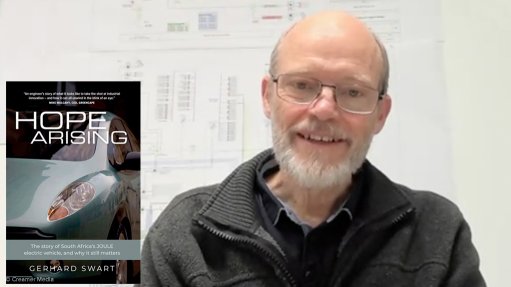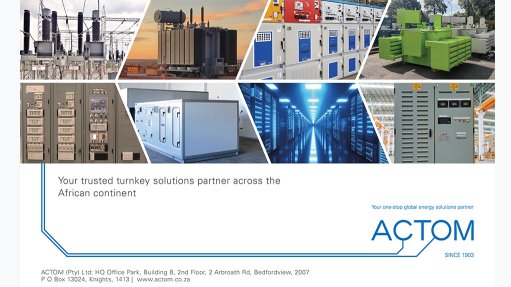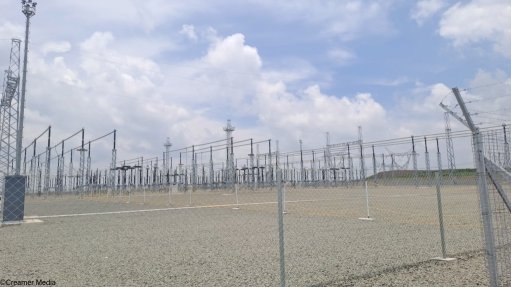Market launch and unbundling progress will send powerful reform signals
Having been established in late 2022 at the height of South Africa’s electricity crisis, the Energy Council of South Africa’s initial focus was almost singular: partner with government and Eskom to end loadshedding.
Under the aegis of the Energy Action Plan (EAP), which was launched a few months earlier in July 2022, and through the partnership between government and business in the National Energy Crisis Committee (Necom), CEO James Mackay says the Energy Council mobilised business resources to support stabilisation and recovery from loadshedding. This also had strong government support, as evidenced by the rapidly advanced financial debt-relief package by National Treasury.
“At one stage, more than 100 private-sector engineers were deployed at power stations,” he tells Engineering News, describing the period as a rare example of full alignment across government, Eskom and big business.
“So, loadshedding was a unique opportunity to galvanise collaboration.” It was the “lowest common denominator for the economy and society” and resulted in rapid decision-making.
Necom didn’t only focus on loadshedding, however. The EAP outlined plans to accelerate a series of reforms that were viewed as long overdue and crucial for transitioning the electricity sector from its historic monopolistic structure towards a modern and liberalised market structure. These reforms have been further supported by recent amendments to the Electricity Regulation Amendment Act (ERAA), which came into force in 2025.
Necom 2.0 Priorities
Mackay says that the 2024 elections allowed for a natural pause, which was used to reshape the next phase, or ‘Necom 2.0’, on advancing reforms and accelerating investment, with a strong emphasis on transition design elements.
Most notable, he argues, are the South African Wholesale Electricity Market (SAWEM) Market Codes and design elements, the national wheeling framework, net billing rules, grid access rules, transmission development planning, connection capacity assessments, trader licensing and tariff plans. Major new elements were also brought into focus, including electricity distribution industry reform and social affordability concerns as well as renewed focus on planning through the Integrated Resource Plan (IRP) and grid funding mechanisms.
The council estimates that R2-trillion in new investment will be required over the next decade to meet this policy ambition, including R1.3-trillion for new wind, solar PV, and gas-to-power generation, as well as battery storage, R400-billion for transmission and R300-billion for distribution infrastructure.
To achieve that vision, however, Mackay believes there are four immediate priorities, namely:
- An accelerated roll-out of the additional grid infrastructure needed to unlock new connection capacity, particularly in the period 2028 to 2032. The major corridor upgrades and independent transmission projects (ITPs) will take longer to unfold;
- Agreeing on a roadmap for the launch of a competitive electricity market, starting in 2026 with the launch of SAWEM;
- The continued unbundling and functional independence of the National Transmission Company South Africa (NTCSA), with a clear commitment to ensuring that it is able to play the role of the Transmission System Operator (TSO) as envisaged in the ERAA; and
- Building institutional and technical capacity within the public sector, including within the National Energy Regulator of South Africa (Nersa).
Mackay believes launching SAWEM and a clear pathway for an independent TSO will be powerful investment and business confidence signals, even if the initial phases are limited and slower than what critics may want to see.
“South Africa is an attractive energy investment destination. We will shut around 20 GW of coal over the next 15 to 20 years and this will be replaced with a blend of technologies, but underpinned by low-cost utility-scale wind and solar. A functioning, transparent market is the only way to ensure new generation comes online at the scale and pace required,” he avers.
Nersa has increasingly become a pivotal role-player. In addition to the SAWEM market operator licensing, Market Code approval and establishment of oversight bodies, the regulator has now had to intervene to resolve and approve grid access rules and settle the Eskom legal dispute involving licensing traders by resolving and approving trader rules. This while still needing to finalise and approve system-wide tariff unbundling and Eskom Generation vesting contracts, the establishment of the central purchasing agency and other ongoing sector regulatory oversight.
Mackay highlights the rapid increase in scale, complexity and importance of the regulator’s workload, and cautions that this is a major risk to keeping to committed timelines.
Full Eskom Unbundling
The full unbundling of the State-owned electricity utility, meanwhile, remains crucial for levelling the playing field between generators as the market unfolds.
Mackay argues that this has many complexities and will take time, so a clear pathway and commitment to timelines is critical. Eskom will remain a dominant market player for decades and while that must be carefully regulated, Eskom has committed to diversifying its generation mix to compete in generation, which Mackay says should be welcomed. It has an important upshot in that all sector role-players are now equally dependent on grid expansion and the SAWEM launch to progress their investment ambitions.
These developments, in Mackay’s view, will be more important than the pending update of the IRP outlining allocations for new generation technologies, which will become a guideline rather than a condition for proceeding with investments.
By contrast, grid expansion and modernisation have emerged as the most critical prerequisite for the transition, and require urgent prioritisation in the shorter term, as the larger corridor projects and ITPs are highly complex.
Mackay believes that while good progress has been made on the planning and engineering of the Transmission Development Plan, this has not moved quickly enough to address the critical shortfall between 2028 and 2032.
“Reflecting on current implementation, ongoing imbalances in the pace of reform and specifically the lack of clarity on public sector reforms are resulting in heightened distrust as evidenced by the trader legal challenge.
“While these issues shouldn’t be seen as a back-tracking on reform, it must also be recognised that the significant scale of private- sector investment already committed and being put at risk, cannot be ‘put on hold’, without precipitating a major collapse of investor confidence,” he argues.
Mackay maintains that public-sector capacity building has lagged the pace of recent deregulation that has spurred rapid growth and investment by the renewables developer industry and now the proliferation of private traders and aggregators.
“South Africa’s public energy institutions are significantly under-resourced compared with their counterparts abroad. Strengthening Nersa and the Department of Electricity and Energy (DEE) is vital to policy implementation, addressing regulatory risks and ensuring sustainable public sector reforms, including Eskom but also municipal role-players.”
Mackay argues that, without steady and deliberate progress on all four of these components, the reform agenda could stall, which would delay investment and, in turn, undermine energy security.
Unwavering Commitment
Nevertheless, he is convinced that the key protagonists remain committed to making progress, despite the recent legal disputes initiated by Eskom against Nersa over the licensing of traders.
“We’re arguing about the nuts and bolts of implementation rather than the direction of travel, and that is exactly where we need to be,” Mackay avers, adding that the Energy Council’s members have an “unwavering commitment” to supporting implementation.
For its part, the Energy Council of South Africa has revised its own strategy to reflect these new priorities and has identified five key objectives, namely:
- Mobilising capacity to support delivery and strengthen institutional and technical capacity especially in the public sector;
- Developing a unified voice within business on critical issues where energy impacts national objectives. He specifically mentions the national communication campaign ‘Energise Mzansi’, which the Council has launched to provide fact-based messaging and awareness;
- Doubling down on practical delivery through council committees and actions, specifically prioritising grid expansion and the SAWEM launch;
- Strengthening relations with government so that the Energy Council is viewed as a trusted partner to entities such as Eskom, Nersa and the DEE; and
- Enabling investor confidence and certainty through developing fact-based, technology agnostic energy planning and positions. Mackay specifically points to the energy data and modelling platform that the council has launched, backed by Plexos Cloud and paired by a dedicated website for data transparency.
On the last point, Mackay highlights that businesses in South Africa are sitting on large cash reserves and industrial growth opportunities that could further unlock significant upside growth in the sector, provided that the policy signals are clear and predictable.
Driving Growth
Mackay argues that after years of loadshedding and deindustrialisation, the country needs a new mindset that sees electricity demand growth as a key indicator of economic acceleration.
Government and business have already indicated that a shift to a higher growth trajectory of above 3% is needed and Mackay believes electricity demand must be a leading indicator of both industrialisation and higher GDP growth.
This will require finding ways to address the current uncertainty around the future price path for electricity, which remains a key obstacle to investment confidence.
The solution, the Energy Council believes, lies in building consensus around the most efficient electricity system possible, which presupposes more intense generator competition, but also requires urgent reform of local government distribution, to ensure that the benefits of competition are felt by business and residential customers alike.
“If societal affordability is breached, then non-payment is the result. If industrial affordability is breached, then disinvestment is the result. Cross-subsidisation and tax support for different consumer groups is internationally the norm, but it takes careful planning, clear policy guidance and strict implementation to ensure the transition is ‘just’ and both vulnerable households and energy-intensive business have a sustainable future in a vibrant South African economy.”
The choices made over the next two years will, in Mackay’s view, determine whether South Africa can shift from crisis management to a growth-led energy transition capable of driving industrial recovery and long-term investment.
Article Enquiry
Email Article
Save Article
Feedback
To advertise email advertising@creamermedia.co.za or click here
Comments
Press Office
Announcements
What's On
Subscribe to improve your user experience...
Option 1 (equivalent of R125 a month):
Receive a weekly copy of Creamer Media's Engineering News & Mining Weekly magazine
(print copy for those in South Africa and e-magazine for those outside of South Africa)
Receive daily email newsletters
Access to full search results
Access archive of magazine back copies
Access to Projects in Progress
Access to ONE Research Report of your choice in PDF format
Option 2 (equivalent of R375 a month):
All benefits from Option 1
PLUS
Access to Creamer Media's Research Channel Africa for ALL Research Reports, in PDF format, on various industrial and mining sectors
including Electricity; Water; Energy Transition; Hydrogen; Roads, Rail and Ports; Coal; Gold; Platinum; Battery Metals; etc.
Already a subscriber?
Forgotten your password?
Receive weekly copy of Creamer Media's Engineering News & Mining Weekly magazine (print copy for those in South Africa and e-magazine for those outside of South Africa)
➕
Recieve daily email newsletters
➕
Access to full search results
➕
Access archive of magazine back copies
➕
Access to Projects in Progress
➕
Access to ONE Research Report of your choice in PDF format
RESEARCH CHANNEL AFRICA
R4500 (equivalent of R375 a month)
SUBSCRIBEAll benefits from Option 1
➕
Access to Creamer Media's Research Channel Africa for ALL Research Reports on various industrial and mining sectors, in PDF format, including on:
Electricity
➕
Water
➕
Energy Transition
➕
Hydrogen
➕
Roads, Rail and Ports
➕
Coal
➕
Gold
➕
Platinum
➕
Battery Metals
➕
etc.
Receive all benefits from Option 1 or Option 2 delivered to numerous people at your company
➕
Multiple User names and Passwords for simultaneous log-ins
➕
Intranet integration access to all in your organisation



